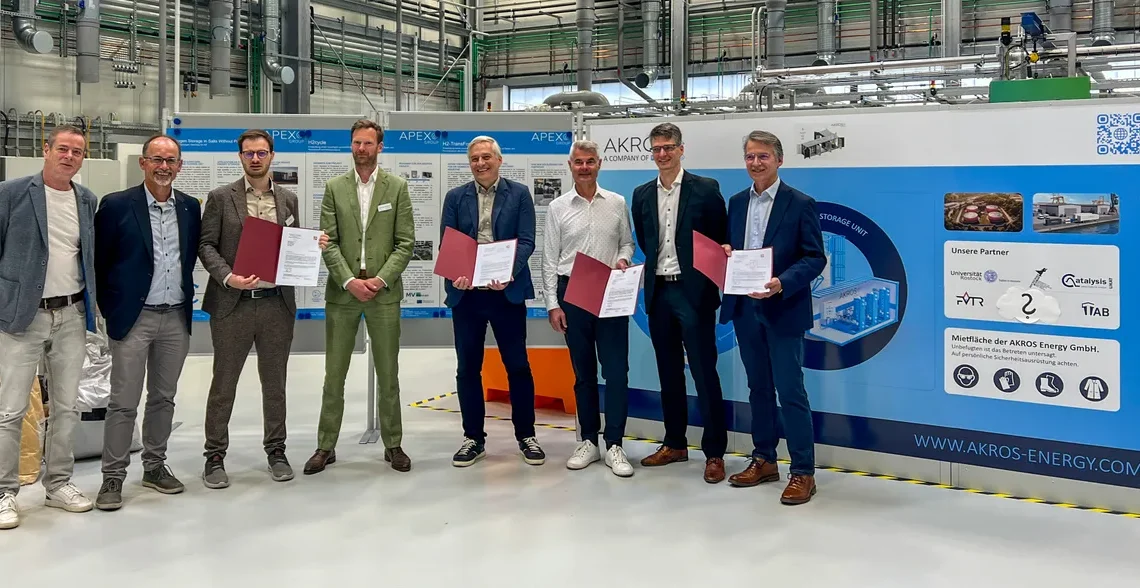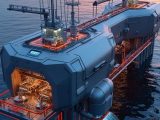
Mecklenburg-Vorpommern Supercharges Hydrogen Storage with Formate Salt R&D
August 12, 2025People always say hydrogen is the fuel of tomorrow—but Mecklenburg-Vorpommern isn’t just talking the talk. On 8 August 2025 at the Leibniz Institute for Catalysis (LIKAT) in Rostock, Dr. Wolfgang Blank, Minister of Economics, Infrastructure, Tourism and Labour, officially handed over state support for FormaPort, a four-year, €4.4 million R&D sprint tackling hydrogen storage with formate salts.
• Ceremony at LIKAT in Rostock on 8 August 2025.
• Budget: roughly €4.4 million over four years; about €1.1 million for Wismar University.
• Consortium of four academic and industry partners developing a reversible formate-salt hydrogen carrier.
• Wismar University of Applied Sciences brings process and environmental tech expertise, with labs in Wismar and Malchow.
• A doctoral researcher joins under the young-scientist program, guided by Prof. Dr.-Ing. Christian Stollberg.
What It Means
This isn’t just window-dressing. By backing formate salts—safe, non-flammable solids that chemically lock in hydrogen—FormaPort is tackling one of green hydrogen‘s biggest hurdles: hydrogen storage and logistics. If it works, we could ship hydrogen at room temperature, plug into existing chemical freight networks, and unlock new routes in the hydrogen infrastructure landscape.
Technical Dive
Here’s the lowdown: you take bicarbonate or carbonate, hydrogenate it into formate salts—think sodium or potassium formate—and you’ve got solids you can handle in bulk. When you need H₂, a catalyst splits the formate back into hydrogen and CO₂ (or cycles back to bicarbonate) under mild conditions. The trick? Mastering that catalyst. LIKAT brings decades of expertise in heterogeneous and homogeneous catalysis, and Wismar’s process engineers are on reactor design and heat integration to hit practical throughput and energy-efficiency targets—vital for sustainable energy initiatives.
Strategic Angle
Germany’s Baltic coast is gunning to be a hub for green hydrogen. Mecklenburg-Vorpommern, with its ports in Rostock and Wismar, sees formate logistics dovetailing with offshore wind electrolysis projects. State funding through the Ministry of Economics sends a clear message—policy muscle in action—especially when a small state commits €4.4 million to a specialized chemical carrier. Industry partners (kept under wraps) are scouting pilot sites, while academia secures the IP. It’s a textbook case of academia-industry collaboration fueled by government backing.
Historical Context
The hunt for hydrogen carriers isn’t brand new. Liquid organic hydrogen carriers (LOHCs), ammonia, and methanol have grabbed headlines for years. Formate/formic acid systems lagged behind—until now. LIKAT’s rich catalysis history and Wismar’s applied-tech focus position FormaPort right at the heart of Europe’s broader push toward industrial decarbonization. The region already boasts wind farms and electrolyzers; now it’s adding chemical logistics to its green hydrogen portfolio.
Collateral Impacts
Beyond the lab, FormaPort could spark regional growth: new research positions, PhD projects under Prof. Stollberg, and busy tech-transfer offices. Safer logistics—ditching high-pressure tanks and cryogenics—could cut insurance and training costs. Existing trucking and shipping networks can adapt to grain-style bulk handling. Critics may flag CO₂ management and catalyst durability; proponents point out that green H₂ in a closed bicarbonate loop could significantly lower lifecycle emissions.
Perspective
Let’s be honest: formate salts aren’t a silver bullet. There are efficiency losses in chemical conversions, and recycling CO₂ streams is no walk in the park. Still, a €4.4 million state-backed budget—and a €1.1 million slice for Wismar—demonstrates serious intent. Betting on solid chemicals over sprawling cryogenic tanks could speed up pilot projects faster than mega-ammonia facilities.
Closing Insight
Keep an eye on FormaPort: if it nails around 80% round-trip efficiency with rock-solid catalysts, formate logistics might jump from lab curiosity to real-world routes. But can it outshine ammonia? Only time—and live demos—will tell.



 With over 15 years of reporting hydrogen news, we are your premier source for the latest updates and insights in hydrogen and renewable energy.
With over 15 years of reporting hydrogen news, we are your premier source for the latest updates and insights in hydrogen and renewable energy.